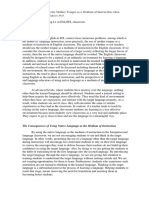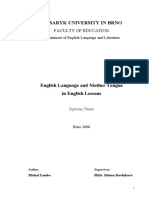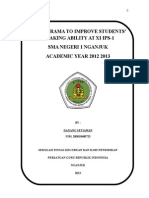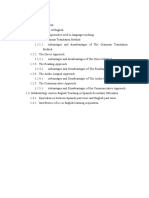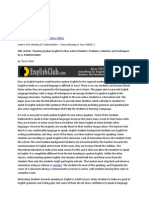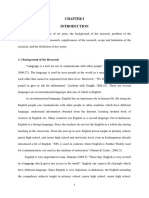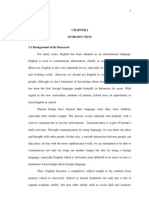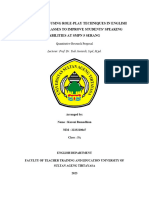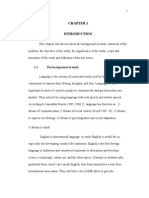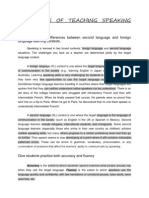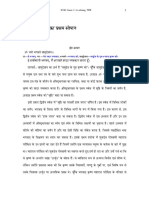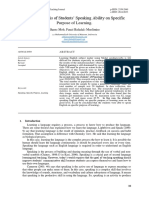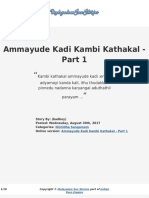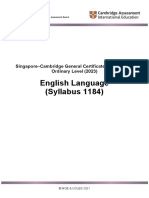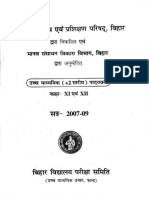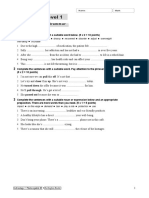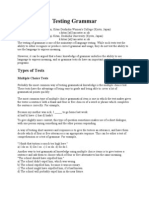0% found this document useful (0 votes)
64 views27 pagesDraft Perbaikan 3
This document outlines Herman's draft thesis on examining the effectiveness of using the target language when teaching speaking skills to 11th grade students in SMAN 10 Gowa. The background section discusses debates around using students' first language or the target language for instruction. The research problem focuses on determining if using only the target language improves speaking skills. The objectives are to find if the target language is effective for teaching speaking. The significance is the theoretical and practical benefits. The scope limits the study to target language instruction and 11th grade students. Definitions are provided for key terms. The literature review summarizes previous research finding positive impacts of target language use on learning.
Uploaded by
Herman Al MahmudiCopyright
© © All Rights Reserved
We take content rights seriously. If you suspect this is your content, claim it here.
Available Formats
Download as DOCX, PDF, TXT or read online on Scribd
0% found this document useful (0 votes)
64 views27 pagesDraft Perbaikan 3
This document outlines Herman's draft thesis on examining the effectiveness of using the target language when teaching speaking skills to 11th grade students in SMAN 10 Gowa. The background section discusses debates around using students' first language or the target language for instruction. The research problem focuses on determining if using only the target language improves speaking skills. The objectives are to find if the target language is effective for teaching speaking. The significance is the theoretical and practical benefits. The scope limits the study to target language instruction and 11th grade students. Definitions are provided for key terms. The literature review summarizes previous research finding positive impacts of target language use on learning.
Uploaded by
Herman Al MahmudiCopyright
© © All Rights Reserved
We take content rights seriously. If you suspect this is your content, claim it here.
Available Formats
Download as DOCX, PDF, TXT or read online on Scribd
/ 27

